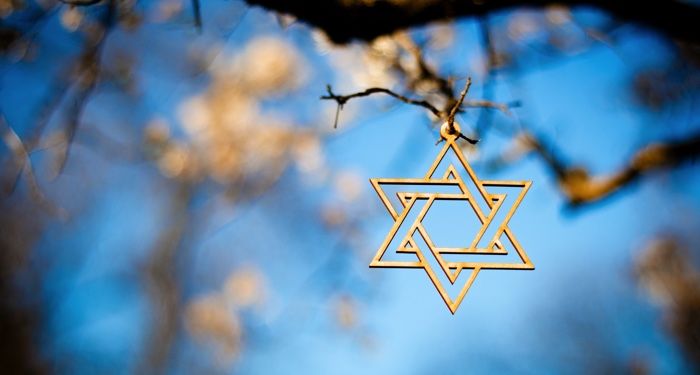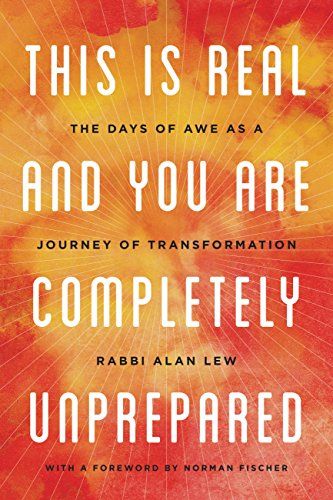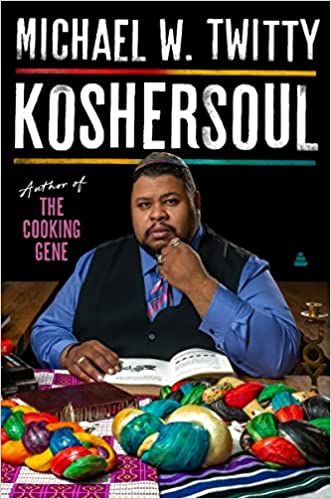
Books to Read for the High Holidays and Other Fall Jewish Holidays
You may have heard of the High Holidays, but do you know what they are? If not, no worries — I’ve put together an explainer, complete with a great book list for kids, teens, and adults to learn more. Let’s dive in!
The evening of September 25th marks the start of the Jewish holiday of Rosh Hashanah, and 10 days later is Yom Kippur. These two holidays comprise what are known as the High Holidays, also called the High Holy Days. Rosh Hashanah is the Jewish New Year, or the first two days of the Jewish month of Tishrei, the first month of the Jewish calendar, and Yom Kippur is the Day of Atonement. The Days of Awe include both holidays and all the days in between them, and during this time, it is customary to reflect on the meaning of the holidays, and ask forgiveness from those you’ve wronged.
On Yom Kippur you fast during the day, but on Rosh Hashanah, it’s customary to eat apples dipped in honey (and wish each other a “sweet new year”), pomegranates (Kabbalistic legend has it that they have 613 seeds, the same amount of mitzvot, or good deeds, commanded of us), honey cake, and dates.
A few days after Yom Kippur is the holiday of Sukkot. This isn’t a High Holiday, but it’s a joyful, week-long harvest festival of thanksgiving, when many Jews build little huts that represent the huts the ancient Israelites lived in after escaping slavery in Egypt. While there aren’t really traditional foods per se for this holiday (except kreplach, or stuffed dumplings), many people include lots of fruits and vegetables in their meals.
Directly after Sukkot is a two-day holiday called Shemini Atzeret, a day of spiritual celebration, being thankful for harvest, and a prayer for rain for the coming year for the future harvest. The second day of Shemini Atzeret is Simchat Torah, which celebrates the end of the yearly cycle of weekly Torah readings, and the start of the new cycle. It’s a joyful holiday, full of dancing, singing, and fun.
Needless to say, for many Jewish people, the fall is a busy time. Family get-togethers, services, dinners, traditional meals and foods — it can feel like a lot. But it can also be a time of recentering, reflection, and joy.
I’ve put together a list of books for the High Holidays as well as the other fall Jewish holidays for all ages — children, teens, and adults. Some books are about the holidays explicitly, while others have themes of the holidays. I do want to point out that there is a notable lack of diversity, especially in the children’s books. There is a lack of diversity regarding Sephardic and Mizrahi Jewish customs, as well as authors who are Jews of Color. I’ve seen slow-growing diversity within general Jewish kidlit, but for the High Holidays and fall holidays, this area seems to be lagging, from what I was able to find. In middle grade/YA and adult books, there has started to be more diversity in general, although it still leans highly Ashkenormative. Whether this is a question of antisemitism, racism, or the one-two punch of both within agenting and publishing, I’m not sure. Believe me when I say there is a market for these books. People and communities would love to have these books, but we need publishing to take a chance on them. We need publishing to stand by them and market them. Jewish people of all races, ethnicities, and cultures exist, and representation is important. Jewish does not automatically equal white Ashkenazi, and the time is way overdue for this to be portrayed in popular media, including books.
If you’re interested in more books to read about Judaism, try this post about books to read to learn about the religion, and this post about Jewish-American novels.
Children’s Books for the Fall Jewish Holidays

Is it Rosh Hashanah Yet? By Chris Barash and Alessandra Psacharopulo
This book is in the “Is it (Jewish holiday) Yet?” series, and all of the books are delightful to read. They incorporate cultural and familial traditions of each holiday, with traditional foods we eat, the season, gatherings, and more. They’re always fun to read and the rhythmic text makes it nice for young kids to listen to.

The Hardest Word: A Yom Kippur Story by Jacqueline Jules and Katherine Janus Kahn
This picture book is based on a Hasidic tale and is, at its root, a story of forgiveness. It’s about a bird who’s kind of a klutz, and when he accidentally destroys a child’s garden, he asks G-d to help. He’s told to bring the hardest word, and he just can’t seem to figure it out for a while. It’s a good story about how it can be really hard to apologize for wrongdoing, but it’s necessary.

The Best Sukkot Pumpkin Ever by Laya Steinberg and Colleen Madden
If you’re looking for a fun fall book that ties in Sukkot, this is the book for you! Sukkot is coming up and Micah and his family go to the pumpkin patch to find the perfect pumpkin to add to their sukkah. But then he learns that many of the pumpkins can also go to a soup kitchen, to help those in need — will he keep the pumpkin he finds? It’s a cute holiday story that also ties in the concept of tikkun olam, or repairing the world.

Maya Prays for Rain by Susan Tarcov and Ana Ochoa
It can be hard to find books for Shemini Atzeret, but this one is great. It’s a beautiful fall day and Maya’s neighborhood is preparing for some fall activities outside, but then she learns that it’s Shemini Atzeret, when Jews pray for rain, and she rushes to warn everyone. Her rabbi is there to explain a little more.

Sammy Spider’s First Simchat Torah by Sylvia A. Rouss and Katherine Janus Kahn
If you’re Jewish and have little kids, chances are high you’ve stumbled upon a Sammy Spider book before. There are books for every holiday where Sammy learns about the occasion and gets into hijinks, and he’s just adorable. In this book, he hitches a ride on his friend Josh’s candy apple and goes to synagogue, where he learns all about the holiday of Simchat Torah and how it’s celebrated.

The Very Best Sukkah: A Story From Uganda by Shoshana Nambi and Moran Yogev
Nambi grew up in Mbale, the Ugandan Abayudaya Jewish community. She is currently a Rabbinic intern, and when she’s done, she will be the first woman rabbi in Uganda — and she’s written this really great children’s book about Sukkot! In the book, Shoshi loves Sukkot, and she and her brothers are decorating their sukkah for the community sukkah contest — except they’re about to learn what can happen when people work together instead of competing.
Middle Grade/YA Books for the Holidays

How to Find What You’re Not Looking For by Veera Hiranandani
This isn’t specifically about the High Holidays, but there is a Rosh Hashanah scene in the book. When Ariel Goldberg’s sister elopes with her boyfriend, who is from India, after the Loving v. Virginia decision, not only does she have to reckon with her family’s racism, but also with antisemitism that she experiences in her community. It’s a layered historical novel that captures not only the big feelings of being 12, but also the societal and political changes going on in that time, and what it means to figure out what you believe in — and what better time to read about that than during the High Holidays?

Mooncakes by Suzanne Walker and Wendy Xu
You don’t often see Sukkot represented in a secular book, so it was a nice surprise to see that in this fun graphic novel. Nova Huang is a teen witch, working at her grandmother’s bookshop. One night she follows a white wolf into the woods and finds her childhood crush, Tam, fighting a demon. Tam is a werewolf, and has been searching for a place to call home. As old feelings resurface, Tam asks Nova for help. It’s a delightful story to read during the celebration of Sukkot.
Adult Books to Read for the Fall Jewish Holidays

This Is Real and You Are Completely Unprepared: The Days of Awe as a Journey of Transformation by Rabbi Alan Lew
This has come to be a classic read for the High Holidays for many people. The book covers the weeks leading up to Rosh Hashanah, through Yom Kippur, a period of reflection and repentance, or as Lew sees it, a time for us to feel the brokenness of our heart and open ourselves up to G-d (or a Higher Power). He uses Torah readings, Buddhist tales and Jewish fables, as well as personal stories to show the growth a person can have over time, and especially on a spiritual journey.

The Color of Love: A Story of a Mixed-Race Jewish Girl by Marra B. Gad
When Gad was three days old, she was adopted by a white Jewish couple. Her biological mother was white and Jewish and her biological father was Black; growing up, she was never enough of anything, she felt, to fully belong anywhere. Her own extended family was racist, and her parents cut those people out of their lives — including her Great-Aunt Nette. After being estranged for 15 years, Gad learns that Nette has Alzheimer’s disease, and Gad can help her in more ways than one. She chooses love over revenge, and as the disease erodes Nette’s racism, they build an unexpected relationship. This story of reflection and choosing love is a thought-provoking read for the fall holiday season.

Days of Awe: The Velveteen Rabbi’s Machzor for the Yamim Nora’im by Rachel Barenblat and Jeffrey Goldwasser
A machzor is a High Holiday prayerbook, and this one has not just prayers for the High Holidays, but also various translations of prayers, artwork and photography, teachings from various rabbis and thinkers, and poetry. It’s a creative, spiritual take on the traditional prayerbook that’s interesting to read, even at home and outside of the prayer service.

A Daughter’s Kaddish: My Year of Grief, Devotion, and Healing by Sarah Birnbach (September 27th)
After Birnbach’s father dies, she takes on the traditional year-long obligation to recite the Mourner’s Kaddish twice a day for 11 months, even though this is traditionally done by males, and despite her father wanting her to hire a man to do it. She writes about balancing this spiritual obligation with her already overly busy life, as she also tries to come to terms with her father’s death. There are obstacles along the way, but this is a compelling story of faith, family, and remembrance that makes it a great add to a High Holiday TBR stack.

The Art of Blessing the Day: Poems with a Jewish Theme by Marge Piercy
Not a High Holidays-specific book, but I wanted to include it here because I think it’s a great collection of poems that are perfect for a season of Jewish holidays. Poems about family, marriage, tikkun olam, prayer, the Sabbath, ritual, and much more. At times humorous, at times painful, the poems brim with emotion and are accessible yet thought-provoking.

My Jewish Year: 18 Holidays, One Wondering Jew by Abigail Pogrebin
Pogrebin realized that though she grew up observing holidays, she didn’t really know much about them: their foundations, how they’re relevant today, why certain things are done, etc. She decided to spend a Jewish calendar year immersed in the holidays, researching them, observing them, and discussing them with rabbis and other Jewish thinkers. It’s an entertaining but reflective read, as Pogrebin writes about each holiday and how she observed or celebrated them, and what she learned.

On Repentance and Repair: Making Amends in an Unapologetic World by Danya Ruttenberg
Ruttenberg looks at forgiveness and repentance based on the work of Maimonides. In his work, forgiveness is less important than the work done by the perpetrator to repair harm — work that they are obligated to do. This work is meant to restore as much as possible to the one harmed. Ruttenberg explores five steps that Maimonides laid out about harm and repair and repentance, and she brings these issues into today’s world, exploring topics like systemic racism, reparations, sexual violence, and white supremacy. Although the book is based in Jewish concepts, it’s really a book for anyone looking to see how our society can acknowledge its harm and create the world we’d like to see.

Koshersoul: The Faith and Food Journey of an African American Jew by Michael W. Twitty
I’ve written about this book before, and I just can’t say enough about it. It’s a beautiful, honest book about food, identity, and culture — namely, the African Atlantic and the global Jewish diaspora. Twitty sees African-Jewish cooking as a conversation of journeys, and he illustrates this through his own personal stories as well as the histories he shares. (Not to mention the mouthwatering recipes). He writes about how food makes the people, and how food has shaped journeys, including his own. It’s the perfect book to read to celebrate the new year and the subsequent Jewish holidays.

Dinners With Ruth: A Memoir on the Power of Friendships by Nina Totenberg
For me, and maybe for many other people, Rosh Hashanah will now always be tied to the death of Justice Ruth Bader Ginsburg. I was driving home from Rosh Hashanah dinner at my mom’s house when she called me to tell me the news. This book chronicles Totenberg’s nearly 50-year friendship with Ginsburg, and describes how both women paved the way for the women who came after them. At its heart, it’s about friendship. A friendship between two women, and the stories they shared.
Although many of these do talk about Jewish holidays, the larger themes are ones that many of us grapple with in our everyday lives: forgiveness, the work of relationships, family, repair, and faith. What book will you start with?











